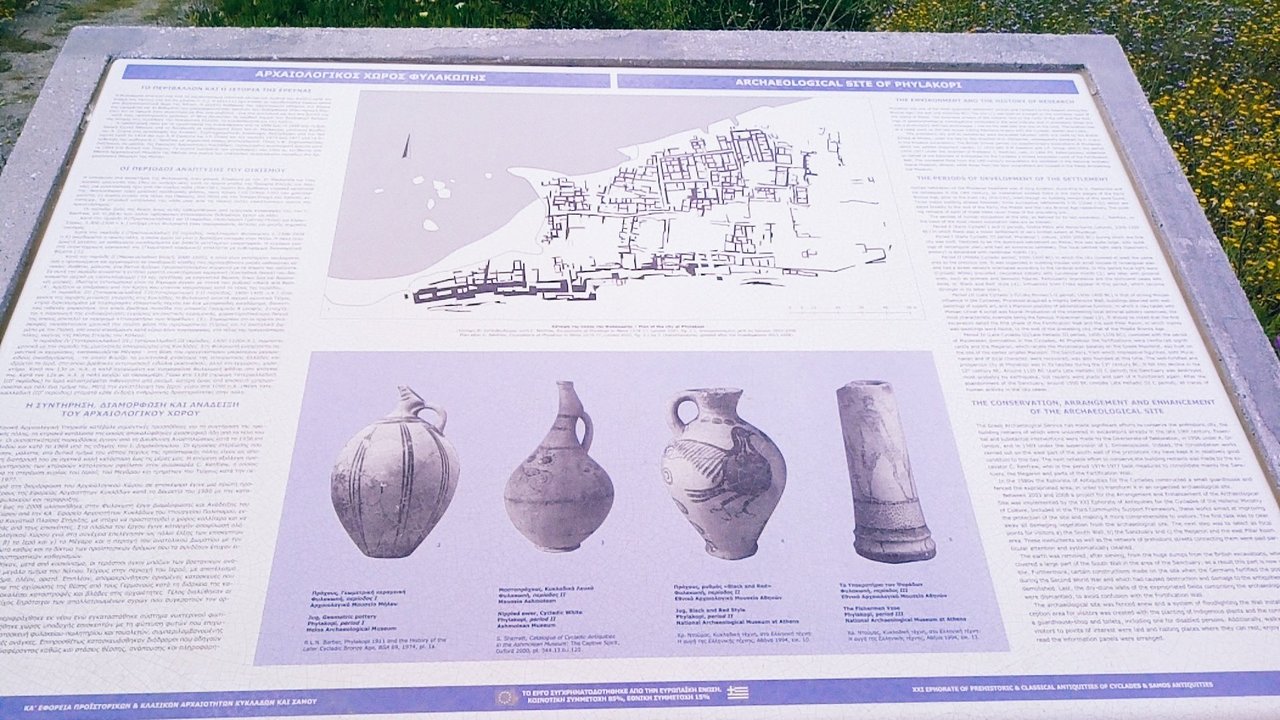
The ancient city of Phylakopi is an ancient Minoan city and is located in the north-eastern part of the island of Milos and is one of the most important archaeological sites dating back to the Bronze Age throughout the Aegean. Of particular importance is the continuous presence of this city, which is found on the site throughout the Bronze Age (ie from the middle of the third millennium BC to the 12th century BC). This made possible a thorough study of the different chronological periods of the Bronze Age in the Aegean area.
The excavations of the Ancient City of Phylakopi
The excavations of the Ancient City of Phylakopi were carried out at the British School of Athens in different phases: initially at the end of the 19th century, specifically between 1896 and 1899 with foreman Duncan MacKenzie, they revealed a Cycladic settlement from the Bronze Age up to that unknown moment, dating back to the early Bronze Age until the end of the late Bronze Age. This suggested dividing the development of the ancient city of Phylakopi into three phases, which we will explain later. The excavations were last taken up by Colin Renfrew from 1974 to 1947 and revealed a previously unknown Sanctuary.
The three phases of the Ancient City of Phylakopi
The first settlement ranging from 3000 to 2000 BC approximately is about 200 meters and does not have an organized layout of roads, but an old, relatively organized cemetery has also been found, in addition to the remains of houses. In this first period the settlement grew thanks to the trade of obsidian, a very hard volcanic stone, used at the time for the manufacture of knives, tools and arrows.
During the second phase (2000-1550 BC) the settlement flourished to become an important point of reference for the Cycladic islands. At the time the town of Phylakopi was densely populated, and blocks of houses were found in a checkerboard pattern, separated by long straight roads. The walls were built to protect the city against enemy attacks and the tombs were placed outside the walls. In this phase trade with the different regions of Greece developed, increasing the wealth and prestige of Phylakopi, but not only. At this time the processing of ceramics grew and was refined, probably influenced by Minoan art. In fact, precious finely decorated artifacts dating back to this era have been found. This period ended with the destruction of Phylakopi, probably due to an earthquake or a fire caused by the enemies.
The ancient city of Phylakopi was rebuilt, thus beginning its third and final phase (1550-1100 BC). During this last period, Phylakopi has an organized and complex street plan, protected by imposing walls with a thickness of over 6 meters and larger houses, some of which are two-storey. At the beginning of this period the contamination of the Minoan culture is clearly visible from the findings. Beyond this, the discovery of a Megaron, a typical Mycenaean construction, led to the hypothesis that Phylakopi was under the political control of the Minoans. The structure called "Hall of the Pillars", built with ashlar stone pillars and blocks, dates back to this period. The interior contained traces of a well-preserved fresco depicting a delicious flying fish. The so-called "Mansion" probably served as the administrative center for the settlement, thanks to the discovery of a fragment of a tablet found inside the structure. The precious works of art and ceramic sculptures made in this period, such as the "Lady of Phylakopi" are kept at the Archaeological Museum of Milos. From 1200 BC the Aegean suffered a slow decline, caused by the displacement of the trade routes and consequently the city of Phylakopi was definitively abandoned in 1100 BC
What can we see today of the Ancient City of Phylakopi?
Much of the ancient city of Phylakopi has been submerged by the sea, but the imposing walls built of volcanic stone, the Temple and the City Palace are still visible. Numerous finds of Phylakopi, sculptures, ceramic vases, seals and jewels are exhibited in the Archaeological Museum of Athens and that of Milos.
The seaside location gives an extra touch to this ancient city, which certainly deserves a visit if you are on holiday on the island of Milos and want to know its ancient history.
The site is open on Tuesday, Thursday and Saturday from 8.00 am to 3.00 pm